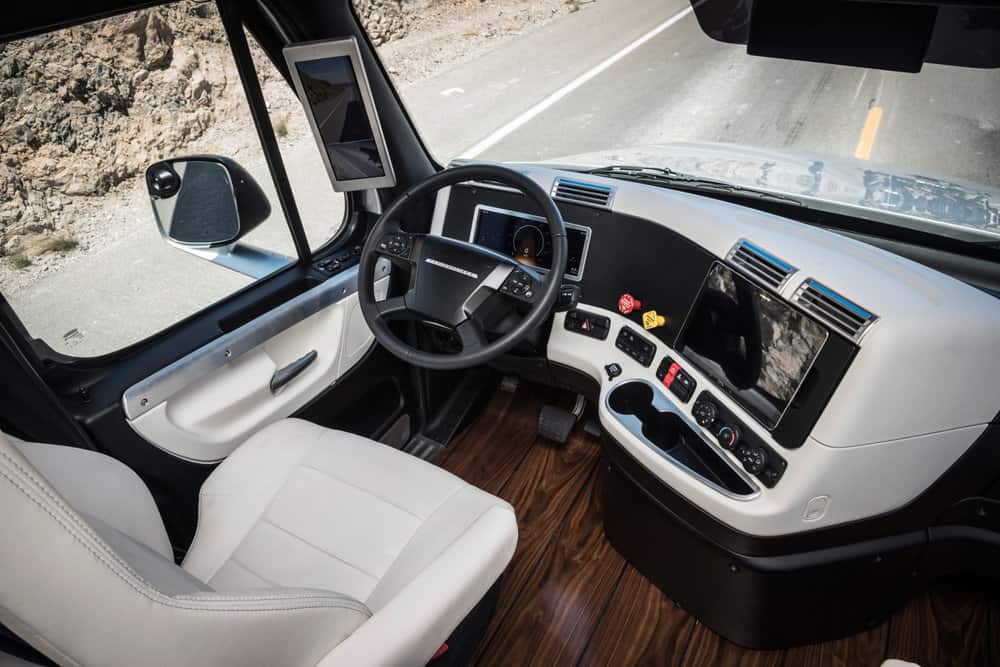
Proponents of autonomous trucks found plenty to be happy with during Wednesday’s Senate Committee on Commerce, Science and Transportation hearing on the technology.
The House of Representatives sent a bill to the Senate last week that would speed deployment of autonomous vehicle technologies, but that bill excluded commercial trucks. Monday’s Senate hearing gave the industry – as well as opponents – the chance to have their say.
Troy Clarke, CEO, Navistar, noted the overall cost of trucks and the amount of investments fleets make in safety equipment.
“Reliability, upfront costs and the vehicles’ residual value all impact purchasing decisions,” he said. “A new truck ranges in price from $60,000 to $150,000….in other words, they represent major capital investments. And they only generate revenue for our customers when they are up and running. Given all of this, our customers invest significantly in the latest safety technology to protect this valuable capital asset as well as their most important human capital—the driver. This explains why market penetration rates for technologies like electronic stability control, radar and cameras for object detection, lane departure warning systems, and collision mitigation systems have been increasing every year.”
Those technologies are among the critical systems in any autonomous truck, a point that Clarke made.
“Navistar sees autonomous technology as an extension of the safety technology already in place and we believe that these greater levels of self-driving technology will help reduce human error, which accounts for approximately 94% of all motor vehicle accidents,” he said.
Clarke went on to note the driver shortage and how autonomous technologies can help in that regard.
“Personally, I believe drivers will become more like airline pilots—even more highly trained and skilled than they are today,” he said. “They will be employed to manage multiple vehicle assets, for optimized safety and efficiency. For example, an autonomous vehicle may be deployed on a straight highway with mixed vehicles, while the driver sitting in his or her seat is managing the controls and monitoring several platooning trucks, and ensuring the safe and secure operation of the trucks under their care.”
Clarke was supported by Deborah Hersman, president and CEO of the National Safety Council, who advocated for the technologies.
“Rear-end collisions represent 10% of fatal commercial vehicle crashes—three times more fatalities than rear-end collisions involving passenger cars. By not deploying ADAS technologies such as forward collision warning or automatic emergency braking, thousands of preventable fatalities and injuries are occurring every year,” she said. “The proposed legislation is intended to set the framework to aid the inevitable transition to ADAS technologies and fully automated vehicles. Our roadways were not made for passenger and commercial vehicles to operate independently of each other, and both types of vehicles are being tested at this time. Therefore, the policies outlined in this legislation should apply to all vehicles.”
Not everyone, though, believes autonomous trucks should be on the roadways. Ken Hall, general secretary treasurer of the International Brotherhood of Teamsters, cited safety and employment concerns.
“Self-driving vehicles have the potential to change the transportation industry as we know it,” he said. “That can be for the better or for the worse depending on the actions that this committee, workers, and others take in guiding their implementation onto our roads. It is incumbent upon the members of this committee to help ensure that workers are not left behind in this process. It is essential that American workers are not treated as guinea pigs for unproven technologies that could put their lives at risk.”
Hall noted that commercial trucks are not passenger vehicles and therefore should be considered the same way when discussing autonomous vehicles.
“The consequences for getting this wrong could be deadly both for workers and other drivers on the roads,” he said. “The public discussion in Congress on autonomous vehicles has tended to focus on the impact of small personal cars on our daily lives – increasing mobility for the disabled, and alleviating congestion in our cities. These are all important topics. But taking a cookie cutter approach in dealing with those issues and applying it to heavy vehicles is reckless.
“For instance, I have yet to hear a serious discussion about how we will make sure an 80,000 pound automated truck will be able to maneuver around a warehouse or drop yard and not injure the countless workers also occupying that same space,” he added. “Or how we would make sure that the rules governing a driver’s training requirements would be updated the moment one of these new vehicles is put on the road. And we haven’t gotten to the largest issue of them all, the potential impact on the livelihoods and wages of millions of your constituents. These issues should be considered carefully and deliberately at the outset of this discussion, not after the fact.”










